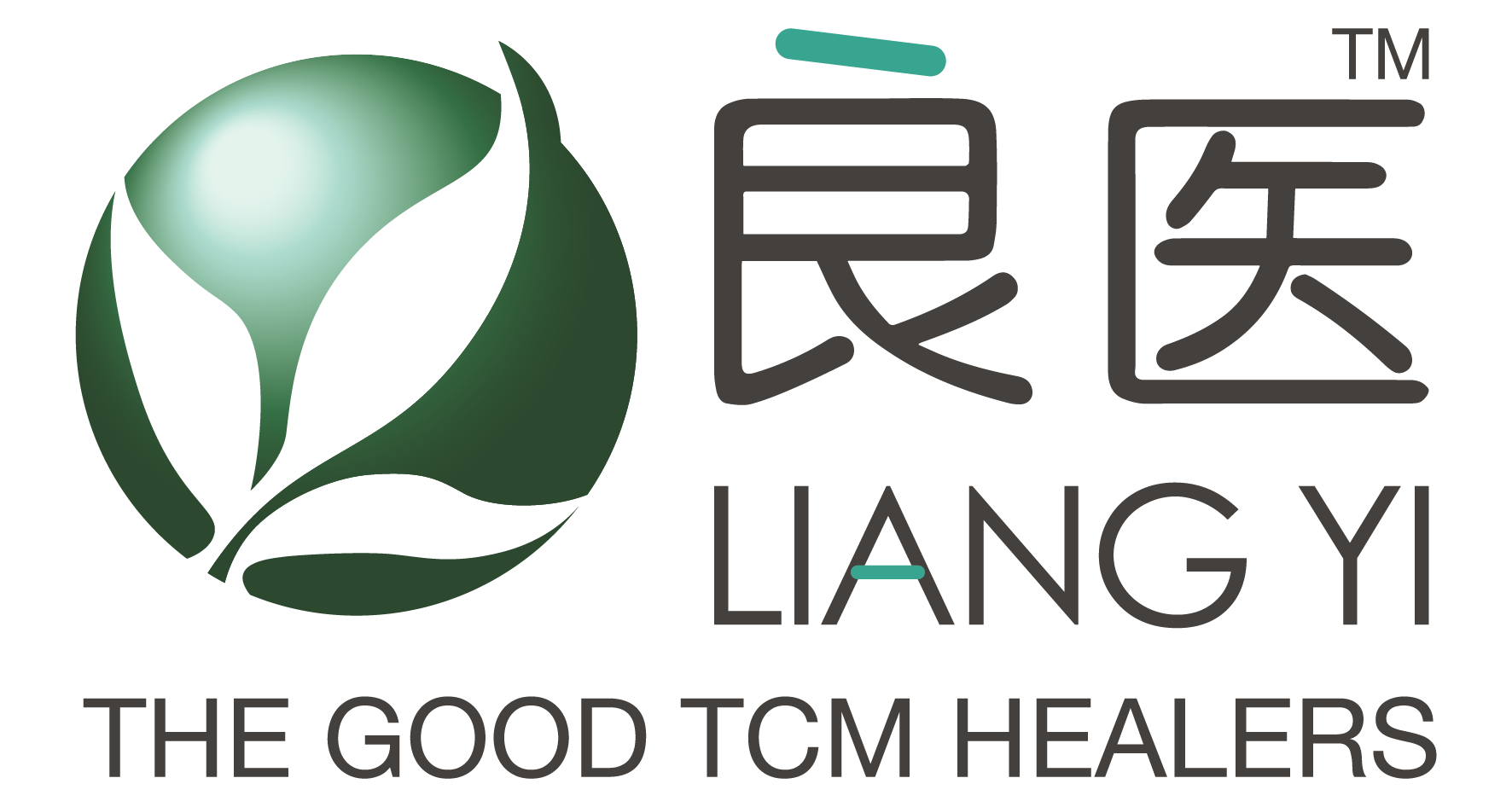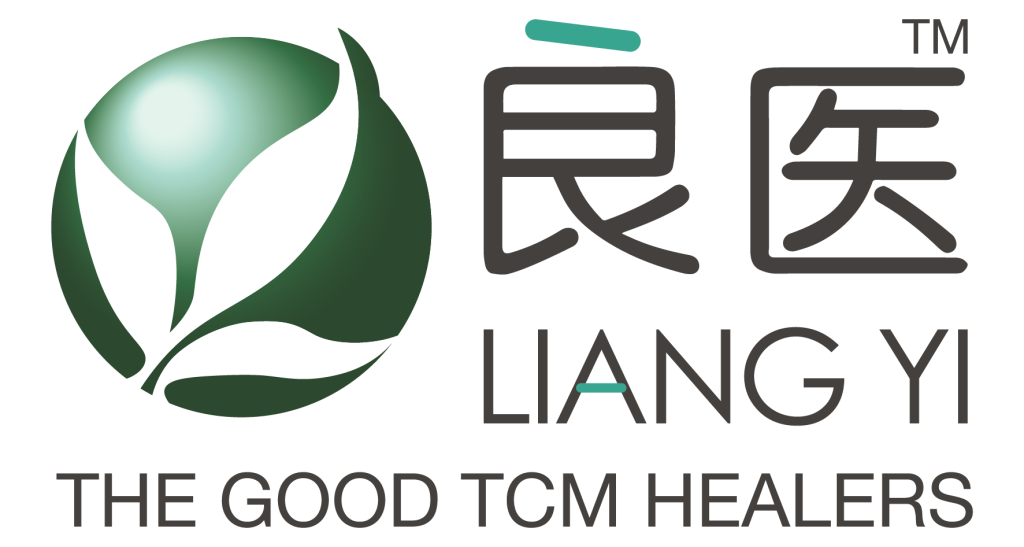Active lifestyles are one of the many engaging ways to maintain your physical health. Unfortunately, accidents never take holidays, and there may be times when an accident or a fall leads to a painful sprained ankle. Fortunately, traditional Chinese medicine (TCM) can help treat sports injuries like this.
What Causes a Sprained Ankle?
A sprained ankle is a fairly common injury that results from overstretched or torn ligaments in the ankle joint. This damage can occur due to a fall or an injury that causes significant trauma to the affected ligaments. While ligaments can withstand considerable force, sudden injuries can still happen when you least expect them. Some of the more common causes include:
- Sports injuries: Landing on your foot at an awkward angle or colliding with someone else could put you at high risk of a sprained ankle.
- Falls: Accidental falls can cause your ankle to twist at an unnatural angle, resulting in a sprain.
- Poor shoe support: Wearing shoes of the wrong size or with poor support increases the risk of an ankle sprain.
- Overuse: Frequent use of the ankle for activities can increase its risk of sprain.
- Prior injuries: A weakened or healing ankle may also be at a higher risk of sprain, especially when there is insufficient muscle strength and coordination or poor balance.
- Anatomical issues: Flat feet are one such anatomical issue that impacts your balance and mobility, potentially increasing your risk of an ankle sprain.
How Does TCM View Sports Injuries
From the TCM perspective, a sprained ankle causes a disruption to normal blood and Qi circulation at the injured area, which manifests as pain, swelling, and other complications.
Blood Stagnation
Western medicine and TCM believe that healthy blood circulation is vital to our body. It ensures that every body part is sufficiently nourished with oxygen and nutrients for optimal function. When an ankle sprain occurs, it can cause an interruption in blood flow, which then leads to stagnation. As a result, your ankle sprain will present symptoms of pain, swelling, and delayed healing, among other things.
Qi Stagnation
Much like blood flow, Qi circulation ensures your vital energy flows to every part of your body. When blood stagnation develops, Qi flow through the meridians, especially those that pass through the affected area, is interrupted. As a result, Qi circulation gradually stagnates, negatively influencing your overall well-being and organ functions due to this imbalance.
External Factors
Your body’s internal imbalance can allow external factors, such as wind, cold, and dampness, which originate from environmental or lifestyle choices, to infiltrate your body when it is at its weakest. This disruption causes pain, stiffness, and even blood and Qi stagnation.
Internal Deficiencies
Various internal deficiencies will also arise and impair organ functions. For sprained ankles, it can weaken the liver (in the form of a Yang deficiency), which regulates the tendons, and thereby increase the risk of tendon injuries when a sprain occurs. Other factors can also promote further deficiencies, such as ageing and underlying medical conditions.
Using Acupuncture to Treat a Sprained Ankle
TCM acupuncture involves placing tiny, sterile needles at key acupuncture points (acupoints) to remove blockages in blood and Qi circulation. By removing these blockages, it ensures that blood and Qi are no longer obstructed, supporting the ankle’s gradual recovery and alleviating inflammation and other issues. Not only that, acupuncture helps promote relaxation and pain relief, which can help manage your symptoms as you recover over time.
For acupuncture to deliver results, the TCM physician will prioritise acupoints such as:
- Jiexi (ST-41 解溪): Helps remove internal blockages affecting the meridians
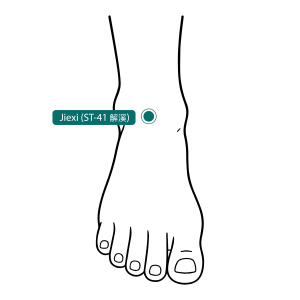
- Waihuaijian (EX-LE-9 外踝尖): Reduces ankle pain
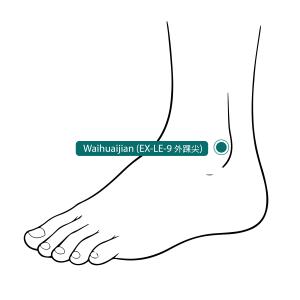
- Qiuxu (GB-40 丘墟): May relieve liver Qi stagnation
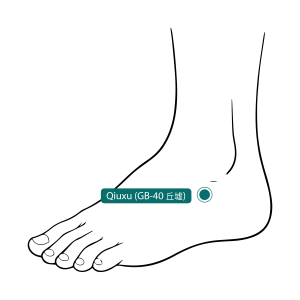
Several studies have indicated that acupuncture may improve outcomes of ankle sprains, especially if performed as complementary therapies alongside Western medical treatments.
Other TCM Treatments for a Sprained Ankle
Other TCM treatments may help support your acupuncture sessions and the gradual recovery of your ankle.
Herbal Remedies
TCM herbal remedies are made using traditional herbs, carefully prescribed by our TCM physician to support your other TCM treatments for your ankle sprain. The herbal remedies you are prescribed may help to reduce pain and inflammation, improve blood circulation, and promote your recovery. Certain herbal concoctions can also aid in promoting smooth Qi circulation and help remove external pathogens, such as wind and dampness, that may be present in the body. As you enjoy these herbal remedies, you will be able to nourish your body with the nutrients needed to support your well-being and sustain your ankle’s steady recovery.
Tuina
Tuina is a hands-on massage treatment that helps to restore balance to the body by stimulating the flow of Qi. It involves gently applying massage techniques, such as kneading, pressing, and rolling, to the ankle to stimulate Qi circulation and relieve the discomfort associated with ankle sprain symptoms. Tuina can be particularly beneficial in alleviating muscle or tendon stiffness around the ankle and reducing swelling by promoting blood and Qi circulation.
Home Acupressure
Acupressure is guided by acupuncture’s principles, but it relies on gentle massage techniques that you can perform at home. Like acupuncture, you will target specific acupoints, and our TCM physician will instruct you on how to target these points and relieve symptoms at home or work. However, this approach is only used for mild ankle sprains.
Seek Qualified TCM Treatments with Liang Yi TCM
At Liang Yi TCM, we offer TCM treatments to help alleviate your sprained ankle and support your gradual recovery, guided by TCM principles. Contact us today to find out more!
Meet Our Qualified TCM Physicians & Acupuncturist

Hou Ge Li
(PLQ Mall Branch)
Acupuncture Profession of Tianjin University of Traditional Chinese Medicine
Therapeutic Area:
Acupuncture: Sequelae of Stroke, Beauty Slimming

He Lin Long
(Tampines 1 Branch)
Singapore Registered Chinese Medicine & Acupuncture Practitioner
Therapeutic Area:
Pain Management, Low Back Pain, Gynecology and Andrology, Neurological Disorders, Dermatology

Tjai Kang Jie
(Hillion Mall & United Square branch)
Singapore MOH Registered TCM Physician
Therapeutic Area:
Pain Management (back pain, tuina, sports injuries & more), Stroke Sequelae, Facial Paralysis, Gastrointestinal Dysfunction
